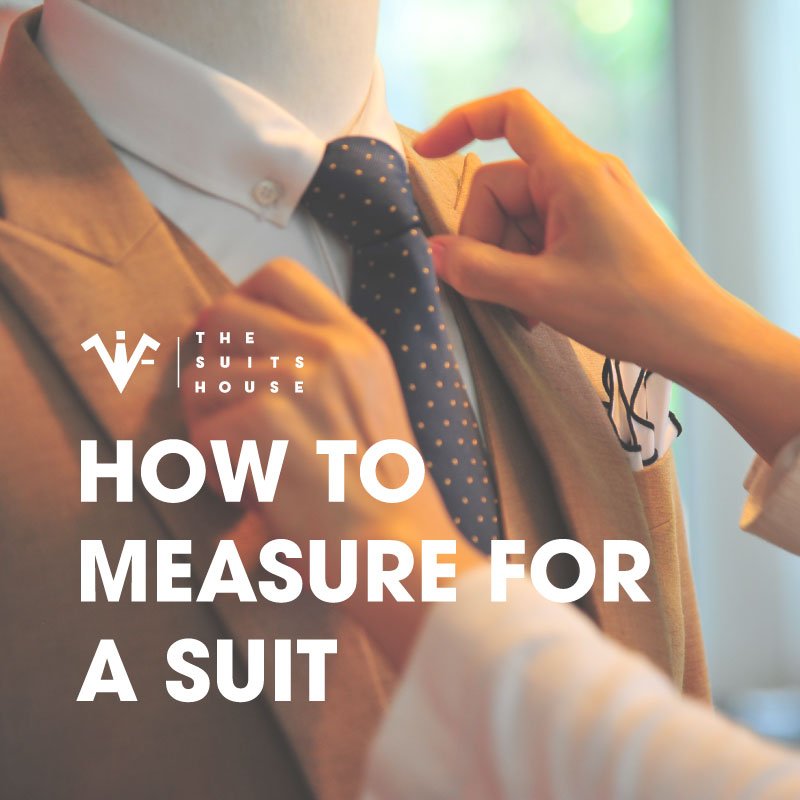-
-
-
Tổng tiền thanh toán:
-

Viết bởi: Phan Việt Thắng
HOW TO MEASURE FOR A SUIT
Only with a suit that is meticulously tailored, cut to your precise measurements and finished to our exacting standards, you’ll have the finest perfect look which represents yourself.
Providing solutions for busy people, we offer you the "Online tailoring" service. Your tailored suit will fit every millimeter based on your measurements in just 6 hours. The result is a masterpiece that is impeccable in every way, right down to the finest details to ensure you receive the individual attention you deserve.
Starting your journey to own the most skillfully tailored suit right now, please provide us your body measurements according to the instructions below:
1. Neck measurement
Using a measuring tape to measure around the neck. The measuring point is about 2.5cm from the intersection of your neck and shoulders, or it may be just below your throat.
Keep the measuring tape straight, not tangled, do not over tighten it.
A well-fitting collar is the collar that fits the neck, the attached shirt collar should be about 1cm higher than the coat collar, when the lapels of the suit and the shirt collar meet at the collarbone of the wearer.

2. Shoulder measurement
Measuring across the 2 widest points of the shoulders. Place the measuring tape from the top of one shoulder to the end of the other and it must be at the back of the shoulder. Remember to keep the measuring tape straight and from the top of the biceps (shoulder part) subtract 1cm on each side.
A common mistake is that the shoulders are too wide. When the wearer's shoulders are not enough, the shoulder is very easy to "break", the Western term calls this "the dreaded shoulder divot". At that time, the top of the sleeve will be indented, looking like a part of the bottom of the shoulder bridge has been gouged out. Conversely, if the shoulders are too tight, the sleeves will tie the shoulders down and the shirt will be pulled back too much. Shoulders that are too tight will make the wearer uncomfortable.

3. Arm measurement
Measure straight from the top of the shoulder to the ankle if measuring for a suit jacket. If you measure for a shirt, add 2cm.
It will be awful when the suit jacket sleeve covers the shirt sleeve. However, suit sleeves that are too short to reveal the shirt cuffs are even worse. The accurate length follows the Goldilocks rule, not too short, not too long. The right sleeve length is when the jacket cuffs above the hands, exposing about 1-2cm of the shirt cuffs.

4. Bicep measurement
Relax your arms and use a measuring tape to measure a circle around the largest position of the biceps.
Do not tighten the measuring tape too much.

5. Chest measurement
Measure around the fullest part of your chest.
Pay attention to the straight, untangled measuring tape to get the accurate measurement and the two lapels are made just fit to the body, not too tight or too wide.

6. Waist measurement
Relax and hold the tape measure close to your belly. Measure around the largest waist circumference.
When measuring, do not squeeze your belly or over tighten the rope. This will cause uncomfort when standing or participating in other activities. In order to not be too tight or too wide when buttoning, the cut on both sides of the shirt according to the waist measurement must conform to the body shape.

7. Measure the length of suit jacket
Measure from the highest point of the shoulder. If your back is quite short, you should measure up to ½ of your bottom. For people with a long back, measuring up to ⅔ of the bottom is most appropriate.
This measurement will help you balance your body more beautifully when wearing a suit.

8. Waist band measurement
Place a straight measuring tape around the waist position.
It is recommended to tighten the measuring tape to get the most accurate measurement if your belly is big. The waistband rests just above the hip bone and slightly diagonally forward. The tailored pants should fit the waist but not too tight.

9. Bottom measurement
Measure around the highest point of your bottom.
Do not set the measuring tape too high or too low, this will cause the incorrect measurement.

10. Crotch rise measurement
Measure from the front waistband around the back waistband.
Note when you are wearing high-waisted pants, it is recommended to adjust to the usual low-bottomed waistband for more accurate measurements. In addition, you can also choose the bottom width according to your wishes. However, you still have to ensure that the crotch length is just right, not high or low, to ensure the most comfort when standing or sitting.

11. Thigh measurement
Measure around the fullest part of the thigh. Note for this measurement is that you should add 2cm more to move comfortably but it’s still a perfect fit. The pants are not too tight on the legs.
Finished product measurement = thigh measurement + 2cm.

12. Calf measurement
Measure around the highest point of the calf. Note that you should add 2cm more to feel comfortable when moving your legs.
Finished measurement = calf measurement + 2cm.

13. Leg opening measurement
Measure around the ankle.
In addition to the precise measurements, you can also choose the width that you want.

14. The length of the pants
Place the measuring tape from the top of the pants waistband to the top or bottom of the ankle, or to the bottom of the shoe.
Basically, pants should have a length that just touches the ankle. In addition, the length of the pants can depend on situations and what you want it to be.

After you have all the measurements, contact us via the fanpage The Suits House or thesuitshouse.vietnam on Instagram for further details of your perfect tailored suit.
VIDEO
—-----
𝐓𝐡𝐞 𝐒𝐮𝐢𝐭𝐬 𝐇𝐨𝐮𝐬𝐞 - Fastest tailor in Viet Nam within 6 hours.
Visit us:
Address: 15 Dinh Cong Trang, Tan Dinh Ward, District 1, HCMC
Tel: 0938.437.581
9:00 AM - 9:00 PM

